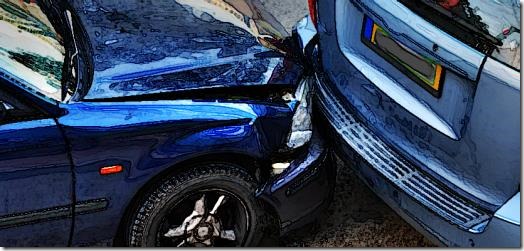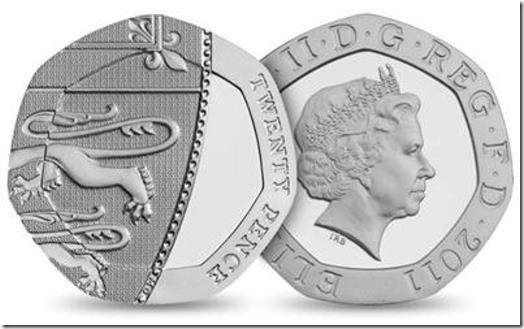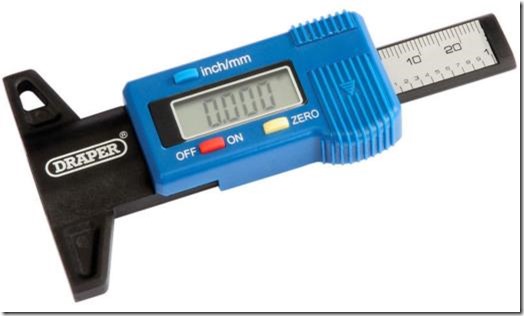 This is an old story from 2011, updated last in 2017, and again in 2020 following another surge of interest with people asking about bald tyres and insurance – particularly when they’ve been involved in accidents.
This is an old story from 2011, updated last in 2017, and again in 2020 following another surge of interest with people asking about bald tyres and insurance – particularly when they’ve been involved in accidents.
Back in 2011 in the run-up to Winter there was story about Cumbria police and the “20p test” (original media link here). I pointed out that this “20p test” does not distinguish between legal and illegal tread depth but is an arbitrary specification which appeared to have been seized upon by Cumbrian police ahead of the predicted relocation of the Antarctic to the UK that year.
Then, Lady Motor News (which doesn’t exist anymore) jumped on it and showed even though a little knowledge can be dangerous, no knowledge at all is even worse. The main thrust of the story was fine: if you have an accident where bald tyres are involved, you may find you are not covered by your insurance.
But they then went on to say:
To ensure you’re not caught with illegal tyres, car insurance experts recommend the 20p trick. Place a 20p coin in the main tyre tread, if the rim of the coin is covered by the tread, then your tyres are legal for use on UK roads.
Technically, this is correct, but only partially – and only by accident. That’s because the correct specification for tread depth on car tyres is that they should have at least 1.6mm of depth across the central three-quarters of the tyre’s width (the bit that goes on the road), and this should be true for the entire circumference (i.e., all the way round). And there should be no cuts or bulges in the sidewall on both sides of the tyre. So, they could fail the ‘20p test’ and still be completely legal (or pass it and be completely illegal because of sidewall damage). That’s because the rim on a 20p coin is about 2.5mm wide, so the ‘test’ only shows if it is above or below this – but not by how much. Consequently, it has nothing to do with ‘being legal’.
It might sound pedantic, but when people don’t understand something and start writing about it, it gets taken as gospel by those who know even less, but ought to know a lot more. Such as new drivers.
If you really can’t afford to buy a proper tyre tread depth gauge, the legal limit of 1.6mm can be measured roughly using either an old-style 10p coin with the row of dots, or a newer coin and the top of the writing around it. The dots (or writing) are about 1.6mm away from the edge of the coin. If you are anywhere near 1.6mm using this method, you need new tyres.
A proper gauge costs under £7, and any decent driver should have one. The digital ones are easily the best.
Is my insurance valid if I have an accident as a result of bald tyres?
I get a lot of hits on this search term. The short answer is NO. You are almost certainly not covered if you are driving a car that is not roadworthy, and bald tyres mean exactly that: the car is not roadworthy (it’s actually illegal).
Will I get away with bald tyres if I have an accident?
If it’s a minor prang, and no one checks your tyres as part of the insurance process, then you might get away with it. If you do, count yourself very lucky and learn your lesson.
If it’s a bigger accident, and especially if the police are involved or there is damage to property or person, you’re likely to end up being prosecuted. The more serious the accident, the more likely they are to look for what caused it – and you not stopping in time or skidding because you had bald tyres is likely to be a major factor. If this happens, you’ll get points on your licence, and quite possibly a criminal record. Your insurance will be void, and any compensation awarded to the injured parties (plus expenses) will fall to you to pay. You could even end up in prison if you have a habit of playing silly games with the Law, and the court decides enough is enough.
Is my insurance still valid if I have an accident with a bald tyre?
If the bald tyre is discovered, your insurance will almost certainly not be valid. And don’t count on it not being discovered. If you spin out on a bend, even if no one else is involved, the police are more than likely going to want to know why it happened. Once they’ve satisfied themselves you weren’t drunk, the next step will be mechanical defects. And a bald tyre is obvious to see and will be the first thing they look for.
If your car is in an accident and you have a bald tyre will the insurance sort it out?
Someone found the blog on that precise search term. It’s a bit of a silly question, since if you have bald tyres, you don’t actually have valid insurance, so why should they help you ‘sort it’ if you’re involved in an accident as a result? Some might – but your future premiums will go sky high. It’s best not to try it – just check your tyres and replace them if they’re badly worn.
Think about it. Four new tyres – cost approximately £100. Insurance before accident for 23-year-old – say £1,000 a year. Insurance after accident for 23-year-old – £2,000 plus (quite a lot plus, in many cases), loss of any no-claims bonuses, and several years to get even close to what you were paying before.
Am I covered if the person who caused the accident had bald tyres?
Tricky one, and in all honesty I don’t know. Technically, if your own insurance is void if you have bald tyres, then your insurer could refuse to pay out to the 3rd party, and that would therefore apply if you were the 3rd party. Then there are the fraudulent claims for old damage, more damage than was actually caused, inflated repair costs, whiplash, and so on.
It’s a legal minefield. If you’re in this position yourself, seek professional advice.